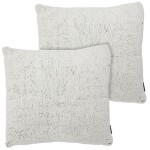Elevating Interior Spaces: Column Decoration Ideas
Columns, historically significant as structural elements and symbols of grandeur, have transcended their purely functional role and become integral design features within contemporary interior spaces. Incorporating columns into interior design requires consideration of architectural style, spatial constraints, and desired aesthetic. Effective column decoration leverages a range of materials, techniques, and styles to enhance visual appeal and complement the surrounding environment. This article explores several ideas for decorating interior columns, providing insights into transforming these architectural elements into focal points that contribute to a cohesive and aesthetically pleasing interior.
Material Selection and Surface Treatments
The choice of materials and surface treatments significantly influences the overall look and feel of decorated columns. The existing material of the column (often concrete or wood) will often determine the extent to which it can be altered. When dealing with structural columns, any proposed changes must be carefully considered and adhere to structural engineering guidelines. However, even without major alteration, surface treatments can dramatically enhance the aesthetic.
Paint and Faux Finishes: Painting is a straightforward and cost-effective way to transform columns. Selecting a color that complements the room's palette or creates a striking contrast can alter the entire ambiance. Faux painting techniques, such as marbleizing, wood graining, or antiquing, can add depth and texture, mimicking more expensive materials. Consider using specialized paints formulated for specific surfaces to ensure durability and longevity.
Stone and Tile Veneers: For a more luxurious and substantial look, stone or tile veneers can be applied to columns. Natural stone, such as marble, granite, or travertine, adds elegance and sophistication. Tile veneers, available in a wide array of colors, patterns, and textures, offer greater design flexibility. The selection of appropriate adhesive and grouting materials is crucial for a secure and visually appealing installation. The weight of the veneer may also need to be considered.
Wood Paneling and Trim: Wood paneling, ranging from simple beadboard to intricate raised panels, introduces warmth and character. Wood trim, such as crown molding, baseboards, and decorative capitals, can further enhance the column's architectural details. The selection of wood species and stain or paint color should harmonize with the existing woodwork in the room. Ensure proper sealing and finishing to protect the wood from moisture and damage.
Metal Wraps and Finishes: Metal wraps, such as stainless steel, copper, or brass, lend a contemporary and industrial aesthetic to columns. These can be applied as full wraps or decorative accents. Metal finishes, such as polished, brushed, or patinated, offer diverse visual effects. Consider the maintenance requirements of different metals, as some may be prone to tarnishing or corrosion. Metal accents can also be achieved through paint techniques providing the impression of metal without the cost and weight.
Textured Finishes and Plasters: Textured finishes, such as Venetian plaster or stucco, add depth and tactile interest to columns. These finishes can be applied in various patterns and colors, creating unique and visually engaging surfaces. Plasters may require specialized application techniques and sealing to ensure durability and prevent cracking.
Decorative Elements and Architectural Styles
Beyond surface treatments, the incorporation of decorative elements and adherence to specific architectural styles can elevate the aesthetic impact of interior columns. The chosen style should be consistent with the overall design of the space to maintain visual harmony.
Classical Orders: Incorporating elements of classical orders, such as Doric, Ionic, or Corinthian capitals, can add a touch of historical grandeur. These elements can be replicated using modern materials, such as polyurethane or fiberglass, which are lightweight and easy to install. Ensure accurate proportions and detailing to maintain the integrity of the classical style.
Modern and Minimalist Designs: In contemporary spaces, simplified and streamlined column designs are often preferred. These may involve clean lines, geometric shapes, and minimal ornamentation. Using monochromatic color palettes and contrasting textures can enhance the minimalist aesthetic. Consider incorporating integrated lighting for added visual interest.
Rustic and Natural Aesthetics: For rustic or nature-inspired interiors, columns can be decorated with natural materials, such as reclaimed wood, stone, or exposed brick. Vines or climbing plants can be trained to grow up the columns, adding a touch of greenery. Consider using earthy tones and textures to complement the natural elements.
Art Deco and Glamorous Styles: Columns can be decorated with geometric patterns, metallic accents, and luxurious materials to evoke the Art Deco era. Mirrored panels, inlaid details, and opulent lighting fixtures can enhance the glamorous aesthetic. Consider using bold colors and contrasting textures to create a dramatic effect.
Integrated Lighting and Technology: Incorporating lighting within or around columns can enhance their visual impact and functionality. Recessed lighting, spotlights, or LED strips can be used to highlight the column's architectural details. Concealed wiring and seamless integration of technology are crucial for a clean and modern look. Smart lighting systems can allow for customized lighting control and atmosphere adjustment within a space.
Functional and Spatial Considerations
Decorating interior columns should not only enhance aesthetics but also consider functional and spatial aspects. The placement of columns, their size, and their interaction with other architectural elements influence how they are integrated into the overall design.
Column Placement and Proportion: The placement of columns should be carefully considered to ensure optimal structural support and visual balance. Columns should be proportionally sized relative to the room's dimensions and ceiling height. Avoid overcrowding spaces with too many columns and ensure adequate clearance for movement and furniture placement.
Integration with Architectural Features: Columns should be integrated seamlessly with other architectural features, such as walls, ceilings, and doorways. Consider using arches, beams, or moldings to connect columns and create a cohesive design. Maintaining consistent lines and symmetry enhances the overall harmony of the space.
Creating Spatial Divisions: Columns can be used to define spatial zones within open-plan interiors. Arranging columns strategically can create visual boundaries between living, dining, and kitchen areas without the need for solid walls. Consider using different materials or finishes on columns to further delineate spatial functions.
Incorporating Storage and Displays: Columns can be integrated with storage solutions or display areas to maximize functionality. Shelving units, built-in cabinets, or display niches can be incorporated into columns, providing storage space and adding visual interest. Consider the weight and stability of added elements to ensure safety and structural integrity.
Addressing Structural Limitations: When decorating structural columns, it is crucial to consult with structural engineers and architects to ensure that any modifications do not compromise the building's integrity. Avoid removing or altering load-bearing columns without proper authorization and reinforcement. Consider using lightweight materials and non-invasive techniques to minimize structural impact.
Enhancing Acoustics: Columns can be used to improve the acoustics of a room by incorporating sound-absorbing materials. Fabric-wrapped panels, acoustic tiles, or textured finishes can be applied to columns to reduce reverberation and echo. Consider the overall acoustic environment of the space and select materials that effectively address specific acoustic needs. Columns themselves may also generate unwanted noise depending on how they resonate with sound in the room. Attenuating that resonance is an important consideration.
By considering these material selection, decorative elements, and functional considerations, designers and homeowners can transform interior columns from mere structural necessities into striking design features that elevate the overall aesthetic and functionality of their spaces. Careful planning and attention to detail are essential for achieving a cohesive and visually appealing result that enhances the architectural character of the interior.

20 Modern Column Decoration Ideas 2025 Living Room Wall Decorating Home Interior Design House Decor

Modern And Luxury Column Designs Ii Decorative Pillar Ideas Collections Cladding Design Interior Columns

7 Ideas For Wooden Column Interior Design Decorative Indoor Columns

Elegant Architectural Columns Enhancing Spaces With Timeless Grace

Columns In Interior Design Decorating Ideas By Sheldon Mindel Associates

Luxurious And Winsome Columns Designs Round Square For House Exterior Decor Interior Column Design

7 Ideas For Wooden Column Interior Design Decorative Indoor Columns

10 Innovative Ways Of Including Columns Into Modern Interior Design

34 Creative Supporting Columns Face Lift Ideas Design Swan

Inspiring Interior Wood Column Design Ideas For Modern Home
Related Posts







